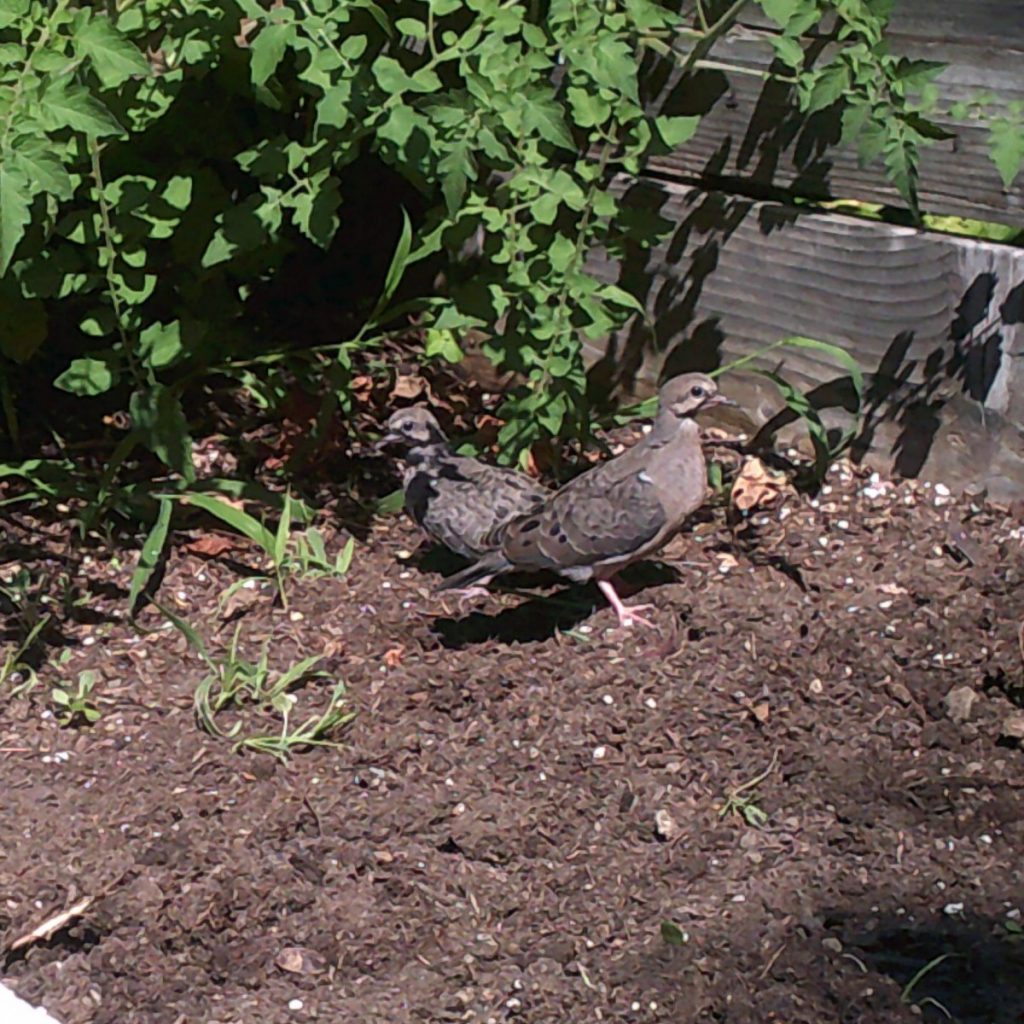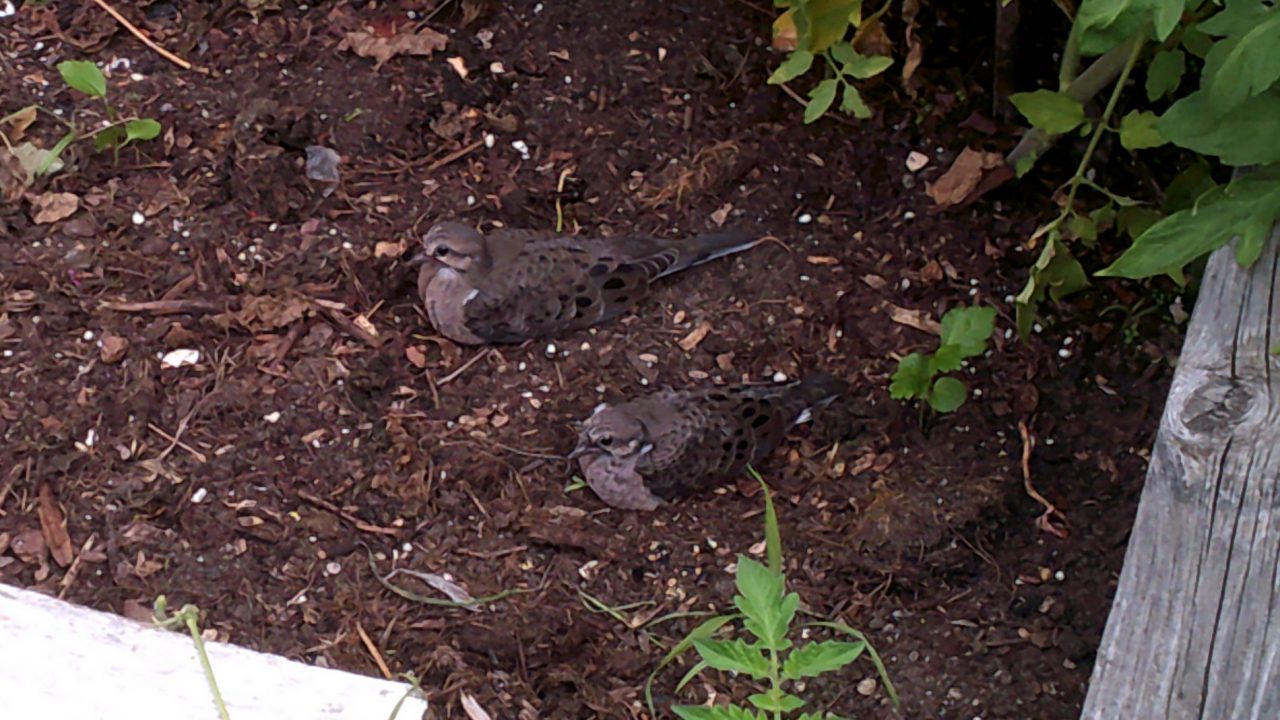I hear sad, moaning calls from an overhead wire It is daybreak when I usually fetch the morning papers. The sounds seem to come from a hollow voice box. I see a pair silhouetted as the Sun’s tip just cuts above a distant bank of trees. Their back and forth calls come out of quiet dawn.
My daughters called them “Oh Oh birds.” Mourning Doves mourn. It is a sad call. Who are they mourning? Could it be their relative the Passenger Pigeon hunted to extinction? Could it be air pollution, water pollution, pesticides and herbicides? And maybe even all the thousands of chemicals that my cause cancer? I mourn with them.
 Their heads are small compared to the size of their body. Their black eye is surrounded by gray head, wing and tail feathers. The outer tail feathers are white tipped. I’ve found dove feathers on many hikes. They are easy prey for fox, owl, and hawk. Vulnerability is something to mourn as well. But, they multiply and keep their species going.
Their heads are small compared to the size of their body. Their black eye is surrounded by gray head, wing and tail feathers. The outer tail feathers are white tipped. I’ve found dove feathers on many hikes. They are easy prey for fox, owl, and hawk. Vulnerability is something to mourn as well. But, they multiply and keep their species going.
I watched an adult feeding at close range. Their head and bill dart extremely fast. I counted over 100 pecks per minute. It’s as if they are feeding as much as possible to hedge against not finding seeds elsewhere.
I hear their wing beats when they fly. They are not long distance fliers. The pair I see each morning are most likely the same birds. When I hear them first thing in the mourning, they connect me to all life on Earth.
I’m attracted to doves as symbols of peace. Although they are common and overlooked, I give them attention and respect. Recently I had an opportunity for up close observation.
I discovered a lot of bird droppings on my car which was parked under tree branches. Nancy, my wife, noticed a nest directly above. She had to point it out several times before I spotted it. “It’s a mourning dove nest.” It had the typical flimsy construction and looked as if it was about to fall. I saw two young doves perched on the edge.
Several days later, I found those two nestling on my cold frame. They could fly but they preferred to settle down on the soil. In the shade of a tall tomato plant, they were almost invisible. Only their eye led me to their location. I concluded that they were fledglings because they were small and somewhat tame. I was able to crawl up close to take a photograph.
I decided to spread some bird seed after I saw them take feeble pecks on the soil. I had stopped spreading fresh compost to plant fall spinach. As soon as I cast the seed, they both alighted, on into the tree with the nest, the other on top of my car. I had left the camera in the house. This one was a perfect photo opportunity.
The bird was gone. It was a thrill to have a new generation of mourning doves in our yard. Although it is far from a nature sanctuary, we have several island of wild vegetation where wildlife can hide. Recently we have had a Cottontail Rabbit hopping and feeding.
All wildlife connects me to the bigger picture. I don’t go on safaris or expensive bird watching tours, or voyages to Antarctica. My backyard offers “Local wildlife” no parking problems and a restroom is available.

Mark
Enjoyed your observations and writing, Tom.
Alas mourning doves are easy prey, even for other birds. The hawks that target my yard find mourning doves the easiest meal. The only feathers are left.
But the doves are also the biggest bullies of the feeder, hogging the seed and chasing everything from sparrows to blue jays (and other mourning doves).